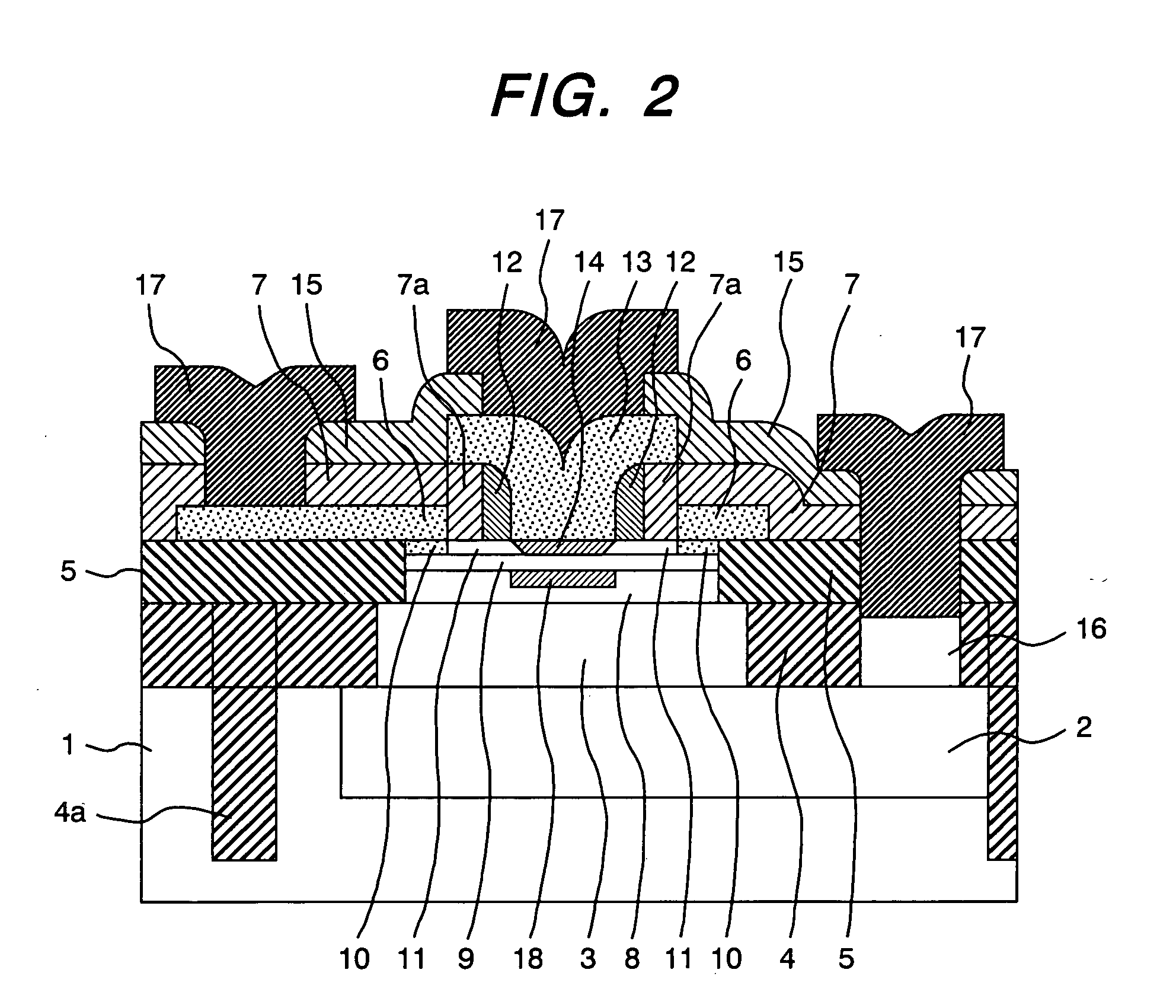Semiconductor device and method of manufacturing the same
a semiconductor and semiconductor technology, applied in the field of semiconductor devices, can solve the problems of crystal defect, lowering of breakdown voltage, deterioration of transistor characteristics in the application of high current, etc., and achieve the effect of high breakdown voltage performance of transistors
- Summary
- Abstract
- Description
- Claims
- Application Information
AI Technical Summary
Benefits of technology
Problems solved by technology
Method used
Image
Examples
first embodiment
[0033]FIG. 1A and FIG. 1B illustrate the distribution of impurities (FIG. 1B) and germanium (FIG. 1A) in a principal portion of a semiconductor device according to a first embodiment of the present invention. The axes of abscissa in FIGS. 1A and 1B are shown in a correlated manner to facilitate understanding of a correlation between Ge distribution (Ge content) and impurity concentration (density of impurity). Silicon-germanium layer is distributed so as to cover a p-type base, and a heterointerface between silicon layer and silicon-germanium layer is disposed near the junction of n-type emitter and p-type base. A heterointerface on the collector side is disposed at a predetermined distance from the junction of n-type collector and p-type base, and a low concentration collector region is formed by two layers which are an n-type silicon-germanium layer and an n-type silicon layer. Phosphorus as n-impurity is distributed so as to have a peak near the collector-base junction in the n-t...
second embodiment
[0042]FIGS. 11A and 11B shows the distribution of germanium and the distribution of impurities, respectively, in a semiconductor device according to a second embodiment of the present invention. In this embodiment, the germanium composition in a silicon-germanium layer is set so as to decrease gradually from a certain position toward the boundary between it and an n-type silicon layer as shown in the figure. For example, in the case where the thickness of the n-type silicon-germanium layer is 30 to 40 nm, the germanium composition may be changed in the region of about 10 nm from the said boundary. The silicon-germanium layer having such a composition distribution does not have a steep heterointerface between it and the n-type silicon layer, thus diminishing the barrier itself which occurs in the conduction band as in FIG. 12. FIG. 12 shows a schematic band structure in the case of a steep Si / SiGe interface as indicated by dotted lines. In contrast therewith, the band structure indic...
third embodiment
[0043]FIGS. 13 and 14 are respectively a sectional view of a semiconductor device according to a third embodiment of the present invention and a distribution diagram showing the distribution of impurities and germanium in a principal portion of the transistor. The axes of abscissa in FIGS. 14A and 14B are shown in a correlated manner to permit easier understanding of the correlation between Ge distribution and impurity concentration. Constituent portions shown in FIG. 13 are identified by the same reference numerals as in FIG. 2. The construction of a phosphorus doped region 18 in FIG. 13 is different from the construction shown in FIG. 2. This is a main different point. More specifically, in this embodiment, a peak value of phosphorus distribution is set so as to be positioned on the n-type silicon layer side with respect to the central part of the n-type silicon-germanium layer. By shifting the phosphorus distribution to the n-type silicon layer side, it is possible to hold the el...
PUM
 Login to View More
Login to View More Abstract
Description
Claims
Application Information
 Login to View More
Login to View More - R&D
- Intellectual Property
- Life Sciences
- Materials
- Tech Scout
- Unparalleled Data Quality
- Higher Quality Content
- 60% Fewer Hallucinations
Browse by: Latest US Patents, China's latest patents, Technical Efficacy Thesaurus, Application Domain, Technology Topic, Popular Technical Reports.
© 2025 PatSnap. All rights reserved.Legal|Privacy policy|Modern Slavery Act Transparency Statement|Sitemap|About US| Contact US: help@patsnap.com



